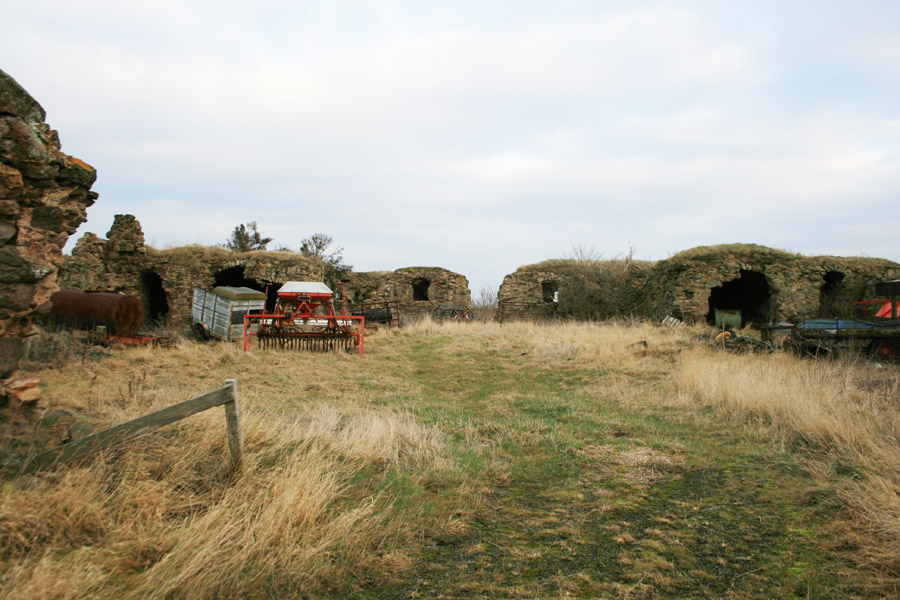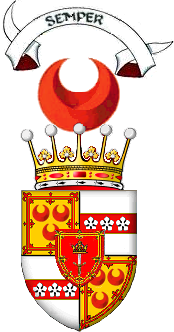See: http://www2.thesetonfamily.com:8080/directory/Descents/Barnes_Descent.htm
Andrew Seton, Esq. of the branch called 'Seton of Barnes'. In his early years it is assumed that he was educated in Scotland, although he later relocated to Oxford, and then to London. He was married on the 03 March, 1760 at Caversham, Oxford, England, to his distant cousin Margaret Seton, daughter of John and Elizabeth Seton of the family of Parbroath, and later emigrated to Brookhaven, Long Island, New York.
He was listed under Bankrupts in 1766 as a merchant-resident address at Billiter Square, London, in 1766 in The London Magazine, Or, Gentleman's Monthly Intelligencer, Volume 35; and in the 'Universal Pocket-Companion in 1767, as a merchant-resident at Copthall Court, Throgmorton Street in London, along with his cousin John Seton listed at Birchin Lane, Cornhill, London.
In the volume, Records of Ante-Bellum Southern Plantations, From the Revolution Through the Civil War, Series M: Selections from the Virginia Historical Society, Section 22, Carter, Robert (1728-1804), Correspondence, 1754-1804, the company of Forrest and Seton appears as: Forrest & Seton of Havre de Grace [now Le Havre], France, Scottish merchants, and France; Forrest & Seton of Alexandria, Virginia (concerning France and tobacco).
He was a very industrious merchant in London and the America's: partnering with his cousin Arthur Forrest in the venture 'Forrest and Seton'; in the partnership, 'Hasenclever, Seton, and Crofts' in London, with a capital of 20,000 pounds sterling; in 'The American Iron Company' (est. in London in 1764-67); and later a partner in 'Seton-Humfray'.
During the years between 1758 and 1761, the Royal Navy had been attacking French shipping in the West Indies, using both ships of the Royal Navy and those of the merchant marine, called then 'Ships of a Letter of Marque", which were registered with the Admiralty. These merchant ships were under strict rules from the Admiralty, and shared the profits from such 'engagements', or privateering, against the French ships with the British Government.
It was under these circumstances that Andrew and his cousin Captain Arthur Forrest, from experiences of the Seven Years War, registered on the 21st of March, 1759 the ship, 'Elizabeth', with the Admiralty, as a ship bearing a Letter of Marque against France. She was a ship of 210 tons and manned by a crew of 25 and equipped with 10 carriage and 6 swivel guns. The partner owners employed a certain Captain James Dunn and were so successful that they registered a second ship, 'Cacelia', in 1761 for the same purpose; this time a ship of 356 tons, with a crew of 50 and armed with 20 carriage guns. (Noted in the volume: Haughton FORREST (1826-1925) Biography, Catalogue and Gallery of Paintings, By Geoffrey M. Ayling, Ian (Malik) Smith, The Forrest Project).
Using profits garnered from his ventures in the merchant marine, he and Arthur Forrest invested in the Iron trade, and the Ringwood, New Jersey iron mining and smelting operations, and where he also encouraged his brother-in-law, William Seton (famed of Parbroath note, later of New York), to also invest. This investment was to result in the commencement of the American iron and steel industry, and so noted by the New York Historical Society.
In April 1764, as partner with The American Iron Company, he sailed for New York with his partners, and arrived six weeks later. The partnership acquired the Ringwood Ironworks in July 5, 1764, and proceeded energetically to repair and improve it, before further difficulties ensued with Hansclever. Despite eventual bankruptcy in 1767 of the first iron works, he continued in the iron trade and engaged in The American Ironworks Company which was established in London in 1767, primarily as a reorganization of the original venture and which again included (the now) Commodore Arthur Forrest.
The other investor's of the reorganization included those of the British Admiralty, such as Major General David Greeme, George Jackson, the Deputy of the Admiralty, the Commodore Forrest, along with Richard Wills and Richard Atkinson. The importance then of this type of activity to the defense of Great Britain, was clearly indicated by the individuals who became trustees of the second company, and where during the later American War of Independence, the Ringwood iron-making operations produced tools and hardware for the American Army, along with the Hudson River Chain which was a heavy chain stretched across the Hudson River from West Point to Constitution Island in 1778 to prevent British Men of War ships from entering. With his involvement and close connections to the British Crown and Navy, it is of no wonder that Andrew was sought-out during the revolutionary war.
The noted
Peter Hasenclever was named the
agent for the Company and managed the Company's Ringwood
(purchased by American Iron Company in 1764), Long Pond
(founded by Hasenclever in 1766), and Charlotteburgh
iron manufacturing companies in New Jersey and New York,
in which he had interests, and he served as agent from
June to October, 1767. The financial problems related to
the previous bankruptcy however, resulted in his return
to London in 1768.
The Company's iron works were subsequently managed by
Seton Humfray, Thomas Jordan, John Jacob Faesch
(beginning in 1769), and Robert Erskine (d. 1780). The
bankruptcy of Peter Hasenclever in 1769 weakened the
Company because of his close financial relationship with
it, and Hasenclever's creditors therefore sought to put
an attachment on the Company for their claims.
Hasenclever returned to Silesia (Germany) in 1773, and
the Revolution halted all legal action underway, and
from 1773 to 1788 the claims made against the Company
were ignored. However, the iron works continued to
supply material for the Revolutionary forces during this
period, where in 1788 Chief Justice Richard Morris of
New York appointed three trustees for the Company: Peter
Goelet, a New York merchant; Robert Morris, a New Jersey
judge; and William Popham, a New York attorney. Their
responsibility was to ensure that all of the Company's
outstanding debts were settled, and in pursuance of this
they conducted a sale of all Company lands in 1795. By
1806, all of the Company's accounts had been settled.
(The paper of The American Iron Company, are held by The
New-York Historical Society, MS 18).
Andrew and his wife Margaret Seton were first resident in New York in 1773 settling at Brook Haven, Long Island, and then in Brooklyn in 1776. However, as a Loyalist during the Revolution he was of obvious peculiar interest and his home and estates were ravaged, In one particular one event, a party of armed patriots crossed the Sound in whaleboats from Connecticut one stormy night in 1776 and sacked and burned his house and drove his wife and children barbarously out into the snow and cold where they nearly perished. They left word that would have murdered Andrew, had they found him at home. However, despite the War and the eventual Declaration of Independence, he also partnered in the venture, 'Seton-Humfray', before leaving New York and settling his family into Florida, and pursuing renewed business from there into the Caribbean and Jamaica.
After the American War of Independence concluded, he and his family relocated southwards for their safety, settling in the then-(albeit brief) British possession of Fernandina, or Amelia Island which was part of Florida, and which was also still being claimed by Spain. In his last years he ventured on business in the Caribbean, and Jamaica in particular and visiting the Plantation of his then-deceased cousin, Forrest. He continued in the merchant business and had been residing at St. James' Parish in Kingston, Jamaica, when he died in 1794, leaving 5 sons and 6 daughters. His wife Margaret outlived him by over 20 years and died in 1818 aged eighty, and is buried in the old cemetery at Fernandina.
His arms were registered in An Ordinary of Arms: Contained in the Public Register of All Arms and Bearing in Scotland, by Sir James Balfour Paul, Lyon King of Arms, as: Or, a sword in pale az. between three crescents, within a double tressure flory counter-flory gu. Andrew Seton, merchant, London (1766).
They and their children are very frequently mentioned by Mrs Seton (St. Elizabeth) in her letters to her own son, William Seton at New York. Of their large family of children, of whom follows:
Peter Seton: the eldest son was born in England, and was later often mentioned in the family letters of the Parbroath's, and always as a gallant young fellow and a general favorite. He was a Lieutenant in the Royal Navy and was on an Admiral's flagship which put him to a great expense, but found it hard to get along on his pay. In one event they were in a hot engagement with the French, but came out unwounded. He had visited his relatives in London, and wanted to go to the East Indies but died soon after this visit, at the Cape of Good Hope. The last mention of him is in Mrs. Seton's letters, to say that his servant had rifled his effects and made off with all that he could carry.
William Dalrymple Seton: was born in 1774, and was a bold and enterprising young man. He followed the sea in the merchant marine, and on one occasion fought his ship so well against a French privateer that he was given a handsome silver punch bowl bearing the following inscription" "Presented bv the President and Directors of the New York Insurance Company to Capt Wm D Seton as a testimonial of the high sense which thev entertain of his gallant conduct in defending his ship the Northern Liberties against the French Privateer Malantic of superior force in the Bay of Bengal 13th December 1799." On the bowl were also engraved the Seton arms and a picture of the fight. He perished on his ship the Marion which foundered in mid ocean in 1804, going from New York to Leghorn, and was never married.
Mary Seton: married John Wilkes of New York and left issue. One of her sons was the late Admiral Charles Wilkes who is remembered as the Commander of the United States Exploring Expedition.
Isabella Seton: married Robert Henry of Albany New York and had a large family. Their distinguished son was the Hon Charles Seton Henry born November 29 1799. He went South in 1820 and joined the Savannah Bar. He became a Judge of the Supreme Court and President of the Georgia Historical Society and died in 1864.
Charlotte Seton: married John Vernor Henry of Albany New York One of her grandsons is Guy Henry, USA. This distinguished soldier was a general officer in the Civil War afterward a great Indian fighter and Brigadier General in the Regular Army, plus a Major General of United States Volunteers, and has was Military Governor of Porto Rico.
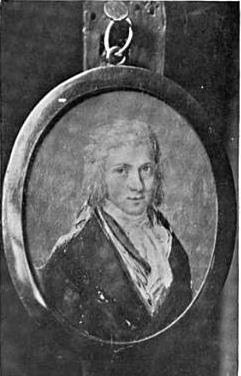 Charles
Seton (1776-1836): 3rd son of Andrew Seton of
Florida was born in Brooklyn, New York in 1776. As a boy
he was cared for by his uncle William Seton of New York,
and early manifested intellectual and social abilities
combined with a love of travel and adventure. He
traveled throughout Europe and to the coast of Africa at
an early age, before settling into the business. At an
early age he went as supercargo to the Cape of Good
Hope, and on his return to America by way of Europe,
visited both Paris and London where he met his cousins,
the Berrys'. His preserved miniature portrait was
painted in Paris in 1811.
Charles
Seton (1776-1836): 3rd son of Andrew Seton of
Florida was born in Brooklyn, New York in 1776. As a boy
he was cared for by his uncle William Seton of New York,
and early manifested intellectual and social abilities
combined with a love of travel and adventure. He
traveled throughout Europe and to the coast of Africa at
an early age, before settling into the business. At an
early age he went as supercargo to the Cape of Good
Hope, and on his return to America by way of Europe,
visited both Paris and London where he met his cousins,
the Berrys'. His preserved miniature portrait was
painted in Paris in 1811.
By influence of his uncle, he engaged in the merchant business of Hoffman, Seton and Co., but speaking Spanish fluently, he moved to Florida around 1811, while the area was still under Spanish rule and was there known in Spanish papers as 'Don Carlos Seton' and was said to have had a Charter from the King of Spain. He went into the lumber business at Fernandina, Florida, a town at the Georgia-Florida border in an area wrought with tension between the Americans and the Spanish until the transfer of Florida from Spain in 1821. There he built a large house and lived with his mother whom he tenderly loved and cared for, and was noted as being a man of great ability and force of character. In Fernandina, he established a plantation called George Plantation, and also saw mill near Fernandina.
In 1813, he took an active and prominent part in repelling an attack on the town by a large body of organized filibusters from Georgia, and fought in a skirmish against raiders from Georgia and who were successfully beaten off, as part of hostilities that broke out in the War of 1812, but was wounded in the chest by a musket ball, carrying the ball in his chest until his death in 1836, dying from lengthy complications from the gunshot wound, a man much loved and respected by all who knew him. However in spite of his injury, in 1820 he became the first American Mayor of Fernandina.
He had married in 1812 Matilda Sibbald, daughter of George Sibbald of Philadelphia, of the Sibbalds of Balgonie in Fifeshire, Scotland. They had two sons and four daughters of whom only one son and one daughter left issue:
George Seton: son of Charles Seton and Matilda Sibbald born December 2, 1817. He was a decidedly handsome man and popular, and a purser for several years before the Civil War on a steamer plying between Charleston, South Carolina, and the Saint John's River, in Florida. He married his cousin, Caroline Sibbald, and during the Civil War was a Captain in the Quartermaster's Department of the Confederate Army. After the war, he was resident in New Orleans, before he purchased property at Sharptown, Wicomico County, Maryland. He died leaving one son and one daughter. His widow lived on the estate with her children: Charles Fraser Seton, representative of Andrew and Margaret Seton, who put forth some claim to be the rightful heir to the Earldom of Dunfermline, and which was refused (in right of the Seton-Coventry claim); and Mary May Isabel Seton.
 Margaret Seton: daughter of
Charles Seton and Matilda Sibbald, married Colonel Lewis
Fleming of Hibernia Florida, and whose father George
Fleming came out from Ireland in 1785 and got a grant of
land from the Government. He married in 1791
Sophia Fatio, daughter of Francis Philip Fatio, who had
settled in Florida in 1771. A sketch of this lady's
familv was published bv the late Mrs. Susan L Engle, who
was connected with it, and who says, "The Fatio family
was originallv from Palermo in Sicily but becoming
involved in the civil discords of that country they
removed to Milan and Venice in Italy and finally to
Switzerland. The name has varied in its spelling I find
it sometimes written Facio sometimes Faccio and
sometimes Fazio but later the present spelling Fatio was
adopted very generally".
Margaret Seton: daughter of
Charles Seton and Matilda Sibbald, married Colonel Lewis
Fleming of Hibernia Florida, and whose father George
Fleming came out from Ireland in 1785 and got a grant of
land from the Government. He married in 1791
Sophia Fatio, daughter of Francis Philip Fatio, who had
settled in Florida in 1771. A sketch of this lady's
familv was published bv the late Mrs. Susan L Engle, who
was connected with it, and who says, "The Fatio family
was originallv from Palermo in Sicily but becoming
involved in the civil discords of that country they
removed to Milan and Venice in Italy and finally to
Switzerland. The name has varied in its spelling I find
it sometimes written Facio sometimes Faccio and
sometimes Fazio but later the present spelling Fatio was
adopted very generally".
The children of Colonel Lewis Fleming and Margaret Seton were numerous, noting: Charles “Seton” in 1838, and Francis Phillip “Frank” in 1841, Frederic Alexander in 1845, William Seton in 1847, Matilda Caroline “Tissie” in 1849, Margaret Seton “Maggie” in 1851 and Isabel Frances “Belle” in 1856. On August 3, 1862, 64-year-old Lewis Fleming died in his bed at the Hibernia “great house”. For most the Civil War, Margaret and her daughters were left alone at Hibernia, while five of the Fleming sons served in the Confederate military. Charles “Seton” Fleming was killed at the Battle of Cold Harbor in Virginia on June 3, 1864, as Margaret and her daughters were expelled from Hibernia by occupying Union forces. After the war, the Fleming’s returned to Hibernia. Sons Lewis “L.I.” and Francis “Frank” became prominent attorneys in Jacksonville. Sons Frederic and William stayed on at Hibernia with their mother Margaret and three sisters to run the plantation and their successful “Fleming House Hotel”. Margaret Seton Fleming died on April 5, 1878. In 1889, Francis Phillip Fleming of Hibernia and Jacksonville, became the 15th Governor of the State of Florida.
Charles Seton Fleming was born at the Panama Steam Sawmills of which his father had charge as Agent and Manager for the owners on the Saint John's River in Duval County, Florida on the 9th of February 1839. He was a valiant young officer, and was killed in Virginia during the Wilderness campaign June 3, 1864, while in command of his decimated regiment in the American Civil War, and died unmarried.
The Honorable Francis Philip Fleming, was born at Panama Park in Duval County on September 28, 1841. He grew up on his parents' St. Johns River plantation and was educated there by tutors. As a young man, and prior to Florida's secession from the Union, Fleming had engaged in various business activities and at the outbreak of the Civil War he enlisted in the famous 2nd Florida Regiment and earned a Virginia battlefield promotion to first lieutenant. He then served as First Lieutenant in the First Florida Cavalry, CSA. Despite being wounded and while home from the battlefield on sick leave, he further established his reputation and successfully commanded a company of volunteers against a surprise insurgency, at the Battle of Natural Bridge.
After the war concluded, he
improved his education and studied law, and gained
statewide reputation as an attorney and became an eminent member
of the Bar. On the encouragement of his peers, he
entered politics, becoming Governor of the State of
Florida from January 1889
to January 1893. He married May 23, 1871, Floride
Lydia Pearson, daughter of the Hon Byrd Pearson, a
native of South Carolina and a prominent member of the
Florida Bar. He later became a Justice of the
Supreme Court of Florida.
During Governor Fleming's administration, a State Board
of Health was established, primarily to suppress a
yellow fever epidemic that was raging through the state
at that time. He died in Jacksonville on December 20,
1908.




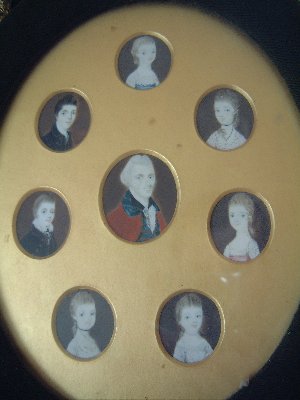
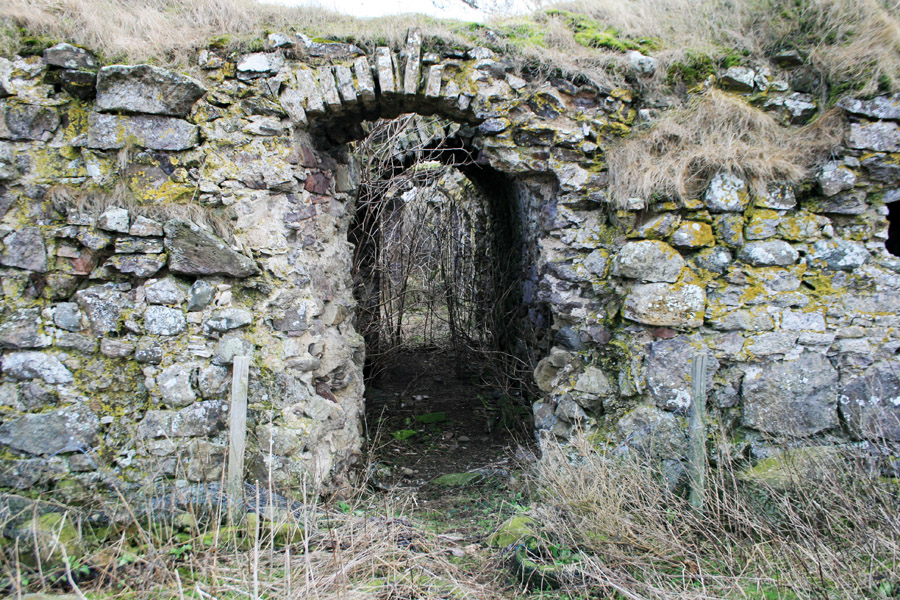
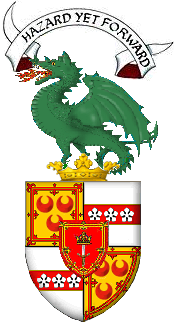 Vice-Admiral
Vice-Admiral 